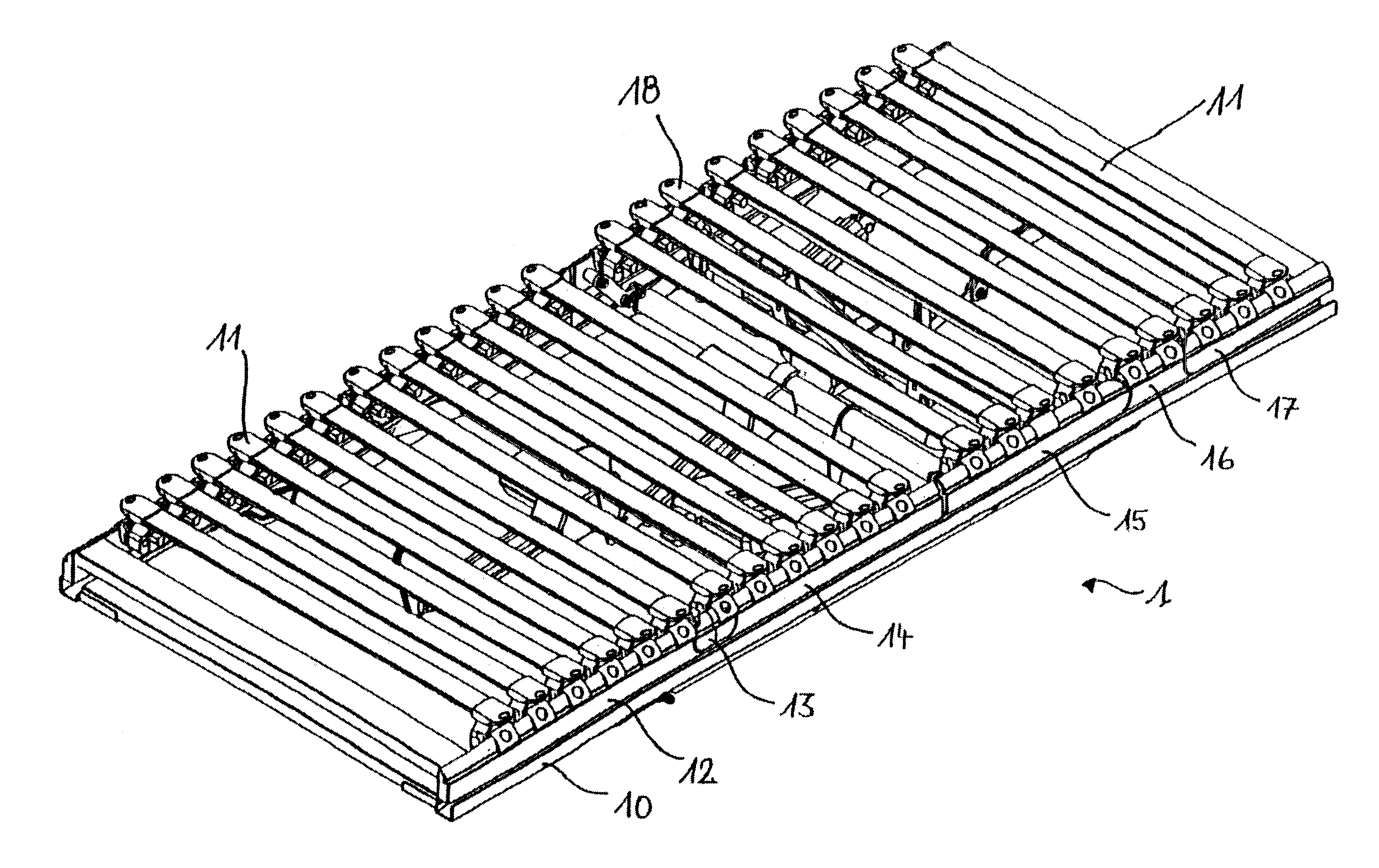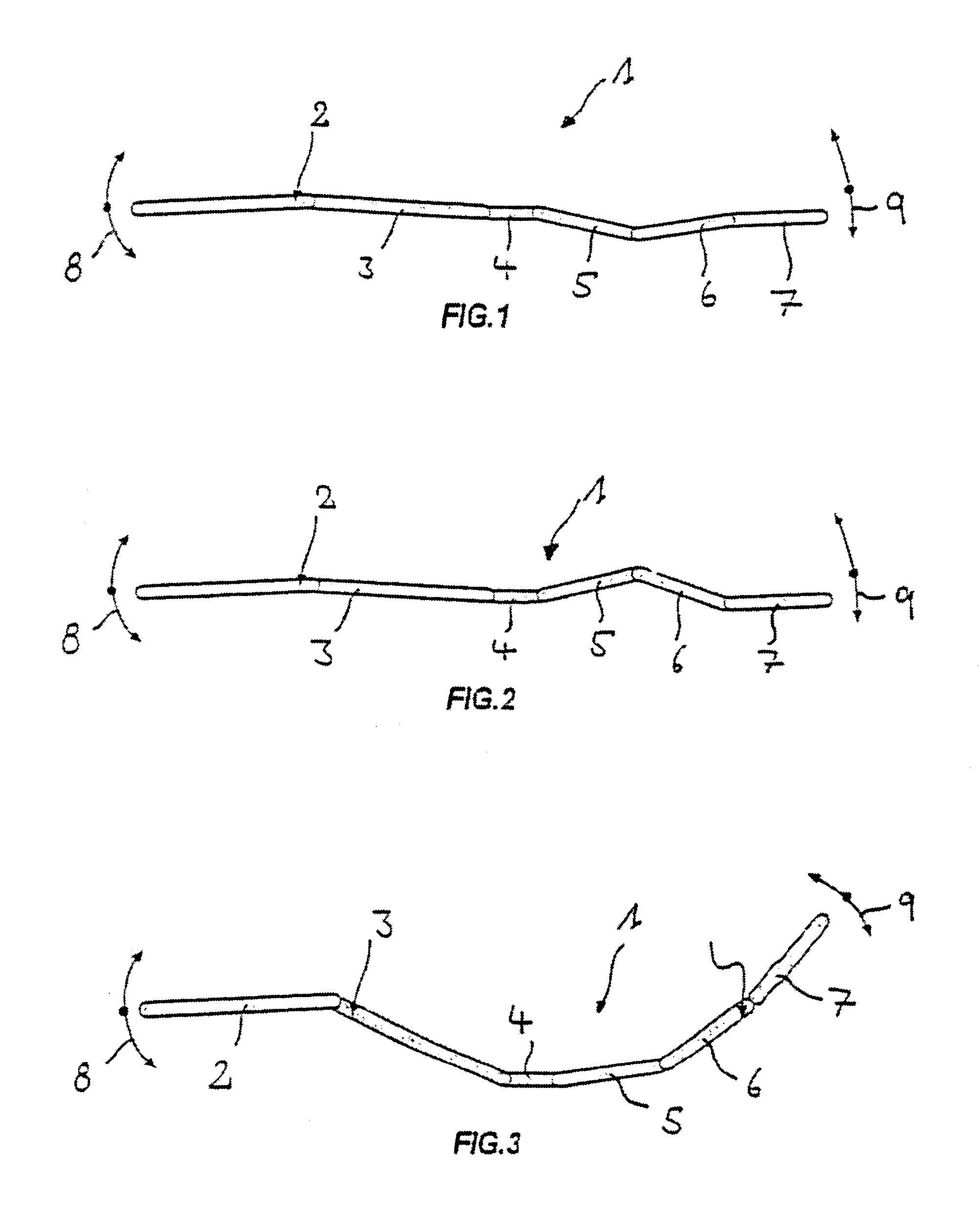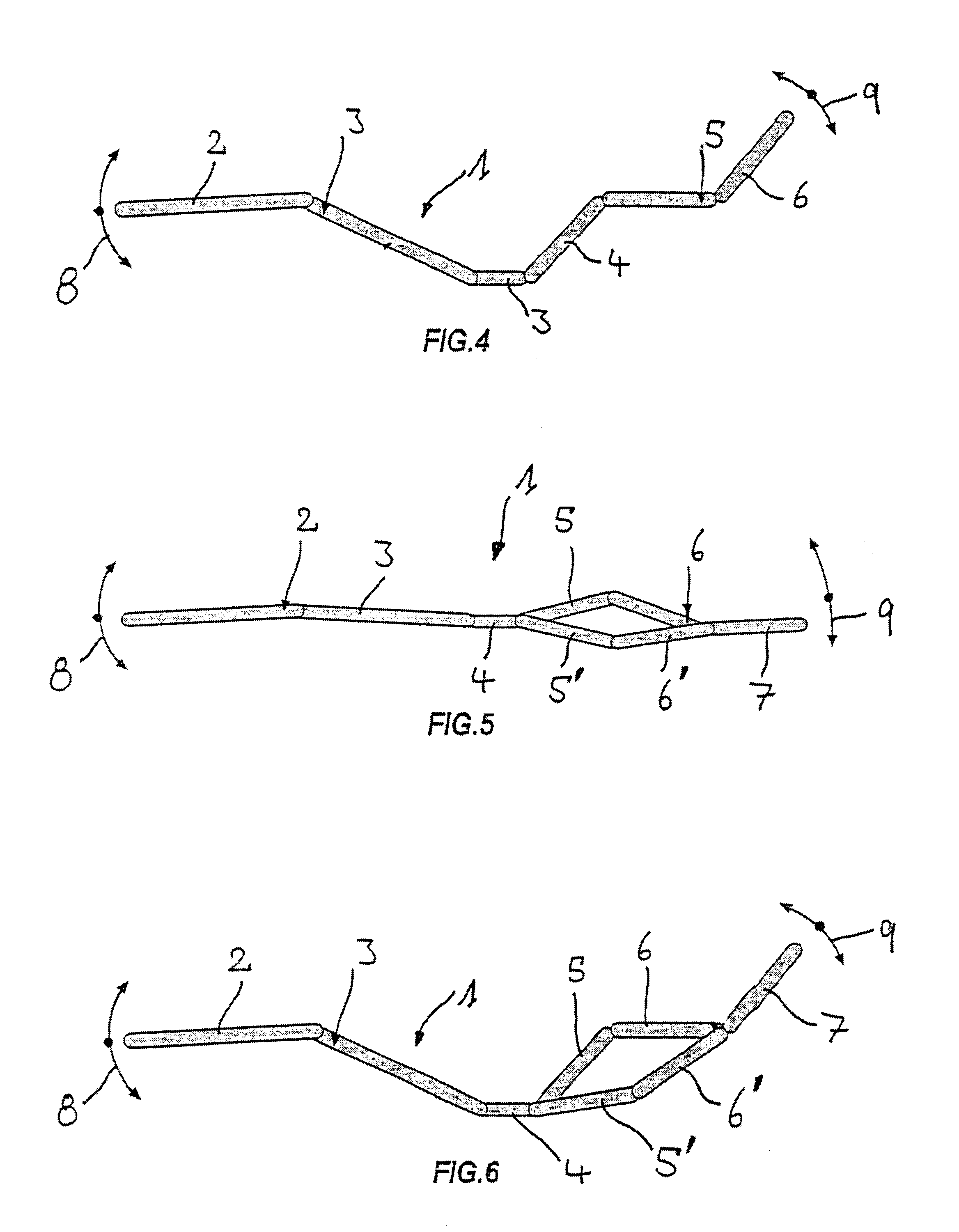[0014]A decisive
advantage of the present invention is that the reclining device can be tailored completely individually to the
individual person, whereby the program, or setting, can be changed over the course of time if the flexibility of the person's spinal column changes. In this way the inventive reclining device consequently adjusts to the person
lying on it during its entire life. This can be interesting in the event a reclining device of this type is used in hospitals, where the reclining device can be adjusted in each case to the particular person.
[0015]The current school of thought says that the
intervertebral disk arches to the rear under flection.
In vivo studies by the inventor have shown that this school of thought is incorrect. The opposite is the case. In the case of
kyphosis, i.e. with the back rounded, compressive forces act on the front annulus (anterior annulus). These compressive forces cause bulging towards the front. At the same time a
tensile strain is created in the rear
fibrous ring (posterior annulus). This causes the collagen fibers to stretch and consequently reduces bulging. This can be demonstrated impressively with the aid of an X-
ray photograph of the
spinal cord using a radiopaque substance (myelography). Experimentally it has been shown that under flection the
nucleus is displaced to the rear, however this displacement is far less than has been reported previously. At the same time, the posterior portion of the outer intervertebral ring tends to move slightly inwards. A
slight change can be observed if the nucleus in the
intervertebral disk is missing because of a herniated intervertebral disk or an operation. The outer
fibrous ring however behaves similarly. Patients with a restriction of the
spinal cord (
spinal cord stenosis or similar) open even these canals in
kyphosis and remove the pressure from the nerve structures. Even the
blood circulation in the space surrounding the spinal cord (
epidural space) is improved.
[0016]The
diffusion of dissolved materials can take place in the lordotic position more easily into the anterior half of the
intervertebral disc than into its posterior half. This imbalance is reversed in the bent position.
Diffusion is more pronounced overall in the kyphotic position, in fact considerably more pronounced in the posterior part of the disk than with an upright posture.
[0020]From the advantages and disadvantages named above it follows that there is no optimal curvature for the spine, if it is assumed statically. When
lying, one's position is constantly being changed to put different and alternating demands on the structures. This also means that a kyphotic position cannot be advised against absolutely, but that it should be assumed in a dynamic alternation with the lordotic position. If the tissues of the motor apparatus of the recliner user are conditioned by movement and load, they receive the mechanical stimuli that they require to maintain their structure. Multiple loads cause bones and musculature to increase in
mass and improves their biomechanical properties. In addition, the cells of these tissues react with intensified
cell propagation and with increased
metabolic activity (Neidinger-Wilke, C.; Wilke, H-J, Claes, L. Cyclic Stretching of Human Osteoblasts Effects Proliferation and
Metabolism: A New Experimental Method and its Application, Journal of Orthopedic Research, No. 12, pp. 70-78, 1994).
[0021]The nourishment of
cartilage and intervertebral disks takes place through
diffusion, which benefits enormously from alternating loads of this kind. Under heavy loads, the fluid is pressed out of the tissues in question, whereby depleted metabolic products are carried away. Then, with the load removed, the tissues can fill themselves to capacity again by soaking up fluid and nutrients like a
sponge. If the aforementioned dynamic alternating load is lacking, the
cartilage and intervertebral discs no longer receive adequate nourishment and they react by degenerating. It follows that the intervertebral disk of a person in the
lying position should be exposed to alternating loads and moved in a variety of ways. This is done involuntarily while sleeping by constantly turning. This is also possible through the inventive dynamic reclining device, in which the back section is adjustable back and forth continuously, preferably oscillating continuously and dynamically between a lordotic position and a kyphotic position, and in this way the
supine position can be assumed over an extended period. This holds true in a corresponding way for exercising legs, knees and hips, which should be moved continuously in an alternating fashion.
[0025]This invention will result in a reduction of
back pain. One can remain for a longer time in the same angled raised position, for example, in order to read, because the structures are being alternately loaded and unloaded, which, in the absence of this movement, forces the
bed user to change his movements. The movement can further reduce
atrophy of structures in a
bed-ridden person.
 Login to View More
Login to View More  Login to View More
Login to View More 


